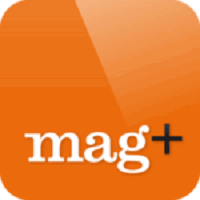Description

Fliplet

Mag+ Application Development
Comprehensive Overview: Fliplet vs Mag+ Application Development
Certainly! Below is an overview of Fliplet, Mag+ Application Development, and WebRatio, highlighting their primary functions, target markets, market share, user base, and key differentiating factors.
Fliplet
a) Primary Functions and Target Markets
- Primary Functions: Fliplet is a platform for creating enterprise-grade mobile and web applications. It enables users to build apps with no coding knowledge through a drag-and-drop interface, offering templates and tools for customization. Fliplet supports app features like dashboards, forms, galleries, and integration with various enterprise systems.
- Target Markets: Fliplet primarily targets enterprise users, including businesses looking for internal apps, event management, training, and communication solutions. The platform is popular among non-technical users such as marketers, HR professionals, and operation managers.
b) Market Share and User Base
- Market Share and User Base: Fliplet has a strong presence in industries that require quick app development without extensive IT resources. It primarily serves SMEs and large enterprises across various sectors including finance, legal, consulting, and education. The exact market share is not readily available, but Fliplet competes with other low-code/no-code platforms in the enterprise segment.
c) Key Differentiating Factors
- Enterprise Focus: Fliplet is specifically designed to cater to enterprise needs, providing high levels of security, integration, and scalability.
- Ease of Use: The platform emphasizes simplicity with its no-code approach, appealing to non-technical users.
- Customizability: Despite its user-friendly interface, Fliplet allows custom code for further customization if needed.
Mag+ Application Development
a) Primary Functions and Target Markets
- Primary Functions: Mag+ is geared towards digital publishing, allowing users to create content-driven mobile applications. It facilitates the design, distribution, and management of rich digital content including magazines, brochures, and catalogs. The platform supports interactive features like embedded videos, slideshows, and HTML overlays.
- Target Markets: Mag+ primarily targets publishers, media outlets, and marketing teams looking to digitize their content for tablets and smartphones. It’s also used by educational institutions and corporate teams for marketing and communication.
b) Market Share and User Base
- Market Share and User Base: Mag+ holds a niche position in the digital publishing market, serving various publishers and digital content creators worldwide. While it may not have a huge market share compared to mainstream app development platforms, it is well-regarded in publishing and media industries.
c) Key Differentiating Factors
- Focus on Digital Publishing: Mag+ specializes in creating highly interactive and visually engaging content apps, making it ideal for magazines and e-books.
- Content Management: Provides robust tools for managing large amounts of content, with emphasis on layout and design.
- Integration with Adobe InDesign: Seamless integration with Adobe InDesign makes it a preferred choice for graphic designers and content creators.
WebRatio
a) Primary Functions and Target Markets
- Primary Functions: WebRatio is a low-code application development platform that provides tools for creating business applications with a focus on rapid development and deployment. It supports the development of both web and mobile apps and integrates with various enterprise resource planning (ERP) systems.
- Target Markets: WebRatio targets large enterprises and software developers who need to build complex enterprise applications efficiently. It’s used across industries such as banking, manufacturing, and retail.
b) Market Share and User Base
- Market Share and User Base: WebRatio is one of several players in the low-code development market. It has a strong user base among enterprises in Europe and is growing its international presence. Its market share is significant within specific industries that require sophisticated app functionalities and rapid development cycles.
c) Key Differentiating Factors
- Complex Enterprise Solutions: WebRatio is suited for developing comprehensive business applications that require complex logic and integrations.
- Model-Driven Development: Utilizes a model-driven approach to streamline application development, which can reduce time-to-market for complex applications.
- Focus on Business Process Management: Strong capabilities in integrating and optimizing business processes and workflows within the developed applications.
Comparative Summary
- Target Audience and Use Cases: Fliplet is best for enterprises needing simple app solutions quickly without coding; Mag+ is ideal for digital publishers wanting to create interactive content apps; WebRatio serves organizations needing complex, process-driven applications.
- Ease of Use vs. Complexity: Fliplet offers simplicity for non-technical users, while WebRatio provides tools for complex enterprise apps, and Mag+ strikes a balance with its focus on content creation.
- Market Position: Each of these platforms holds a unique position tailored to specific industry needs, with Fliplet strong in enterprise apps, Mag+ in digital publishing, and WebRatio in low-code enterprise solutions.
Contact Info

Year founded :
2009
+44 20 3582 9720
Not Available
United Kingdom
http://www.linkedin.com/company/flipletapps

Year founded :
Not Available
Not Available
Not Available
Not Available
Not Available
Feature Similarity Breakdown: Fliplet, Mag+ Application Development
When comparing Fliplet, Mag+ Application Development, and WebRatio, it's essential to break down their features, user interfaces, and unique characteristics. Here's a detailed comparison:
a) Core Features in Common
-
Application Development:
- All three platforms provide tools for creating custom applications without extensive coding knowledge. They cater to both developers and non-developers.
-
Cross-Platform Deployment:
- Each tool allows for the development of applications that can be deployed on multiple platforms, such as iOS and Android.
-
Drag-and-Drop Interface:
- These platforms offer drag-and-drop tools to simplify the design and development process, enabling users to build apps more intuitively.
-
Template and Component Libraries:
- A library of pre-built templates and components to speed up the development process is a common feature across all three.
-
Integration Capabilities:
- They all offer integration capabilities with third-party services and APIs, enhancing app functionality.
-
User Support and Documentation:
- Comprehensive support structures, including documentation, tutorials, and customer service, are provided to assist users in app development.
b) User Interface Comparison
-
Fliplet:
- Fliplet offers a clean, user-friendly interface with an emphasis on ease of use. Its dashboard is intuitive, allowing users to manage various projects seamlessly. The platform focuses on visual editing with minimal coding.
-
Mag+ Application Development:
- Mag+ has a more media-centric interface, catering to users developing content-heavy apps, such as digital magazines. Its UI is designed to facilitate the creation of media-rich experiences, with robust tools for content arrangement.
-
WebRatio:
- WebRatio’s interface leans more towards technical users but still offers visual tools for app construction. It is slightly more complex, with a focus on enterprise-level app development, which may require additional learning for non-developers.
c) Unique Features
-
Fliplet:
- Fliplet distinguishes itself with its strong focus on reducing the need for technical knowledge, making app creation accessible to a broader audience. It also offers solutions tailored for specific industries like corporate environments.
-
Mag+ Application Development:
- Known for its specialization in digital publishing, Mag+ provides unique tools for creating interactive and multimedia-rich applications, especially suitable for digital magazines and brochures.
-
WebRatio:
- WebRatio stands out with its capabilities for developing complex, enterprise-level applications. It features advanced workflow automation and process management tools, making it ideal for large businesses needing comprehensive business process management (BPM) solutions.
In summary, while these platforms share core similarities in facilitating app development, Fliplet excels in user-friendly design for non-technical users, Mag+ focuses on media-rich app development, and WebRatio is tailored for enterprise-level, process-driven applications. Each platform ideally serves different niches and user needs.
Features

Publishing and Deployment
Collaboration Tools
App Development
Integrations

User Interface Design
Content Management
Performance Optimization
Best Fit Use Cases: Fliplet, Mag+ Application Development
When considering platforms like Fliplet, Mag+ Application Development, and WebRatio, it's important to understand how they cater to different needs based on business types, project requirements, industry verticals, and company sizes. Here's a breakdown of the best-fit use cases for each:
a) Fliplet
Best Fit Use Cases:
- Types of Businesses/Projects:
- Corporate Internal Apps: Fliplet is often chosen for developing internal business applications. Companies looking for scalable solutions for HR, operations, sales, or training modules may find Fliplet a great fit.
- Enterprise Solutions: Larger companies that require rapid app development for various functions often use Fliplet for its ease and speed of deployment.
- Non-Technical Users: Businesses without extensive technical resources benefit from Fliplet’s low-code/no-code environment, enabling non-developers to create apps.
Industry Verticals/Company Sizes:
- Industries: Financial services, consulting, healthcare, and legal industries where internal communications and data-sharing apps are crucial.
- Company Sizes: Medium to large enterprises that need to manage vast amounts of data internally.
b) Mag+ Application Development
Best Fit Use Cases:
- Types of Businesses/Projects:
- Digital Publishing: Mag+ is especially designed for creating digital magazines, brochures, and other content-rich applications. It's ideal for media and publishing companies.
- Marketing Material: Businesses that need to create visually appealing content for marketing purposes benefit from Mag+.
- Interactive Content: Projects that require highly interactive, visually dynamic applications are best served by Mag+.
Industry Verticals/Company Sizes:
- Industries: Media, publishing, marketing, and entertainment.
- Company Sizes: Small to medium businesses focused on creative content production, and larger publishers seeking to digitize existing print content.
c) WebRatio
Best Fit Use Cases:
- Types of Businesses/Projects:
- Enterprise Web Applications: WebRatio is favored for its robust capability in developing enterprise-grade web applications with complex workflows and integrations.
- Custom Business Process Automation: Companies looking to automate and optimize business processes often use WebRatio for its ability to handle complex logic and integrations.
- Development-Speed-Focused Projects: Businesses that need rapid development and deployment of web applications with a focus on model-driven design.
Industry Verticals/Company Sizes:
- Industries: Banking, insurance, telecommunications, and government sectors where complex workflows and data processes are common.
- Company Sizes: Medium to large enterprises with specific business process needs and the resources to support a model-driven development environment.
d) Catering to Different Industry Verticals or Company Sizes
- Fliplet is great for varied verticals needing internal app solutions without heavy technical investment, catering mostly to medium and large enterprises.
- Mag+ serves media-rich industries best, offering small and medium businesses tools to create engaging content, and supporting larger corporate marketing efforts.
- WebRatio is optimal for industries requiring sophisticated web application development and automation, serving mainly medium to large enterprises with complex business processes.
These platforms cater to different needs by focusing on their core strengths—ease of use and speed for internal corporate apps, creative content creation, and robust web application development, respectively. Each solution addresses specific industry challenges and company size requirements, ensuring tailored benefits across various sectors.
Pricing

Pricing Not Available

Pricing Not Available
Metrics History
Metrics History
Comparing teamSize across companies
Conclusion & Final Verdict: Fliplet vs Mag+ Application Development
When comparing Fliplet, Mag+ Application Development, and WebRatio, it's essential to consider various factors, including their features, ease of use, pricing, support, and the specific needs of the users. Here's a comprehensive analysis and conclusion:
a) Best Overall Value:
Fliplet offers the best overall value for businesses looking for a user-friendly, flexible, and cost-effective solution for app development. Fliplet's no-code platform makes it accessible for non-developers and offers a range of features that can cater to various industry needs. It strikes a good balance between functionality and ease of use, with strong customer support.
b) Pros and Cons:
Fliplet:
Pros:
- Ease of Use: No-code platform that is great for users without technical knowledge.
- Flexibility: Offers a wide range of templates and customizable options.
- Community and Support: Strong support and active user community.
- Cost-Effective: Competitive pricing, especially for small to mid-sized businesses.
Cons:
- Complex Customization: May require technical assistance for highly complex customizations.
- Scalability: Not as scalable for very large enterprises with intricate requirements.
Mag+ Application Development:
Pros:
- Design Focused: Strong emphasis on design and media-rich applications, ideal for digital publishing.
- Integration: Good integration with publishing tools and digital magazines.
- User Interface: Intuitive UI for designers and content creators.
Cons:
- Niche Use: Primarily suited for digital publishing, not as versatile for other app types.
- Technical Barrier: Requires some design knowledge for optimum use.
- Cost: Can be more expensive due to its specialization and features.
WebRatio:
Pros:
- Enterprise-Ready: Highly suitable for complex, enterprise-grade applications.
- Customization: Offers extensive customization capabilities for tailored solutions.
- Robust Features: Comprehensive features catering to a variety of business needs.
Cons:
- Complexity: Steeper learning curve with a focus on low-code rather than no-code.
- Pricing: Potentially higher cost for small businesses and startups.
- Technical Support: May require dedicated technical staff for full utilization.
c) Specific Recommendations:
-
For Non-Technical Users or Small Businesses: Fliplet is recommended due to its no-code ease of use and flexible, cost-effective pricing structure. It allows users to quickly create functional applications without deep technical expertise.
-
For Digital Publishers and Media-Focused Projects: Mag+ Application Development is a strong choice. Its design-focused platform fits well with digital magazines and media-rich applications, although it's more specialized and may come with higher costs.
-
For Large Enterprises Needing Custom Solutions: WebRatio is suitable for larger companies with specific tailored needs. Its powerful suite of tools and customization options suit enterprises willing to invest in a complex, dynamic solution with technical resources to manage it.
Ultimately, the choice depends on the specific project requirements, budget, and the technical skill level of the users. Consider trial versions or demos where available to better understand which platform aligns best with your needs.
Add to compare
Add similar companies



